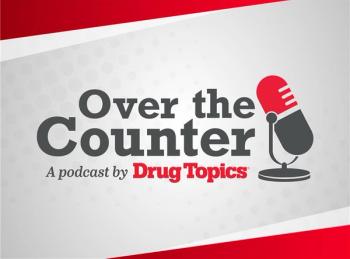
Pharmacists Demonstrate Professional Identity Through Provider, Patient-Focused Roles
Using the Q Methodology to account for subjectivity in responses, pharmacists self-identified their professional identities.
Pharmacists’ professional identities were considered 4-fold as autonomous health care providers, patient-focused practitioners, clinical team members, and leaders with management responsibilities. Researchers suggested pharmacists receive a new lens where all 4 roles blend together, according to a study published in Exploratory Research in Clinical and Social Pharmacy.1
“Professional identities shape who pharmacists are, what they do, and what they stand for as professionals,” wrote authors of the study. “Professional role identity represents how professionals see themselves in relation to their roles leading to understanding who they are and how they should act. Professional role identity is theorized as iterative, evolving with new or changing roles, changing work environments, and extreme events (such as the COVID-19 pandemic).”
According to the study authors, pharmacists universally consider themselves dispensers of medications, but they also identify with roles such as medicine advisors, social carers, and businesspeople. The pharmacist’s ability to diversify roles in health care, however, is just one example of why they are such unique providers when compared with physicians, nurse practitioners, etc.
READ MORE:
It is widely known that pharmacists are the most accessible and frequently visited providers within health care. Their proximity to communities across the world were specifically highlighted during the COVID-19 pandemic, where pharmacists took on roles for testing, preventing, and managing the SARS-CoV-2 virus among patients.2
Despite recent events highlighting the role of pharmacists in public health, other providers have avoided the expansion of pharmacists’ scope. In August 2024, the American Medical Association (AMA), the advocacy group for US physicians, wrote a letter to US Congress opposing legislation that would allow pharmacists to test and treat patients with specific illnesses.
“Misdiagnoses, siloed and uncoordinated care, and patients not receiving the right care at the right time all lead to worse patient outcomes and add costs to our health care system,” read the letter.3 “We should respect the success of coordinated team-based care and put patient safety first by rejecting the misguided approach in this legislation.”
Amid debates and uncertainty regarding the universal pharmacist’s professional role, researchers of the current study conducted a Q Methodology study to better understand pharmacists’ self-identities. By exploring the self-reflection of their professional work, researchers hoped to conceptualize the pharmacist’s overall role and explain how they differ by practice environment.
According to its official website, the Q Method is the scientific study of human subjectivity focused on technique, method, philosophy, ontology, and epistemology. “We call it ‘Q-methodology,’” wrote creator of the method William Stephenson.4 “This is a set of statistical, philosophy-of-science, and psychological principles which, we believe, is such as is demanded by the present scientific situation in the psychological and social sciences.”
Participants included in the researchers’ analysis included self-identified pharmacists in patient-facing roles. They were recruited from the International Pharmaceutical Federation (FIP) Congress in Brisbane, Australia, from September 24-28, 2023. Each participant was asked to follow the Q-method through 4 phases: concourse development, Q-set validation, Q-sort activity, and analysis. While the researchers facilitated most of these phases, participants were asked to rank identity-focused statements from the Q-set during the Q-sort activity.
After recruitment, a total of 18 pharmacists were included (66.7% women, 44% in practice 10 years or less).
“Our findings showed that pharmacists held multiple identities based on their roles and practice settings and depending on their professional role identity or the meaning they attributed to the roles, the same roles were enacted differently,” wrote the authors.1
After various viewpoints were established and included in the Q-set validation phase, pharmacists completed the Q-sort activity to yield their overall self-identity. During the analysis phase, researchers uncovered 3 viewpoints that stood out among others. Those 3 viewpoints were pharmacists as: autonomous health care providers and clinical team members simultaneously; health care providers for individual patients; and managers first, then health care providers.
Despite a small sample size and focus just on pharmacists at a 2023 event, the FIP aimed to use results from the study to inform the global understanding of pharmacists’ roles in health care. With viewpoints of pharmacists on their own profession highlighting a complex and evolving role among other providers, the FIP hopes to use studies like this to foster a globally competent and adaptable pharmacy workforce.1
“Recognizing the complexity of individual pharmacists' identities helps to break free from the cognitive dissonance that has plagued the profession for decades, suggesting that professional identity is represented by singular or often competing roles as the scope of pharmacy practice evolves,” concluded the authors. “There is no need to dismiss the part of ourselves that identifies as dispenser of medicine to be considered clinical but perhaps gives us a new lens in which to see how all these identities work together to form a comprehensive collective professional role identity as autonomous health care providers and clinical team members and focused on individual patients and also mindful of leadership and management responsibilities.”
READ MORE:
Ready to impress your pharmacy colleagues with the latest drug information, industry trends, and patient care tips? Sign up today for our
References
1. Watson KE, Schindel TJ, Meilianti S, et al. An international portrait of pharmacists’ professional role identities: a Q-methodology innovative study. Explor Res Clin Soc Pharm. 2025;19:100616. https://doi.org/10.1016/j.rcsop.2025.100616
2. Muscat NA, Sinclair P, Zapata T, et al. Embracing pharmacists' roles in health-care delivery. Lancet Reg Health Eur. 2024 Sep 24;46:101088. doi: 10.1016/j.lanepe.2024.101088.
3. Henry TA. Physicians to Congress: Don’t expand pharmacists’ scope of practice. AMA. August 9, 2024. Accessed July 21, 2025. https://www.ama-assn.org/practice-management/scope-practice/physicians-congress-don-t-expand-pharmacists-scope-practice
4. Scientific study of human subjectivity. Q method. Accessed July 21, 2025. https://qmethod.org/
Newsletter
Pharmacy practice is always changing. Stay ahead of the curve with the Drug Topics newsletter and get the latest drug information, industry trends, and patient care tips.
























































































































